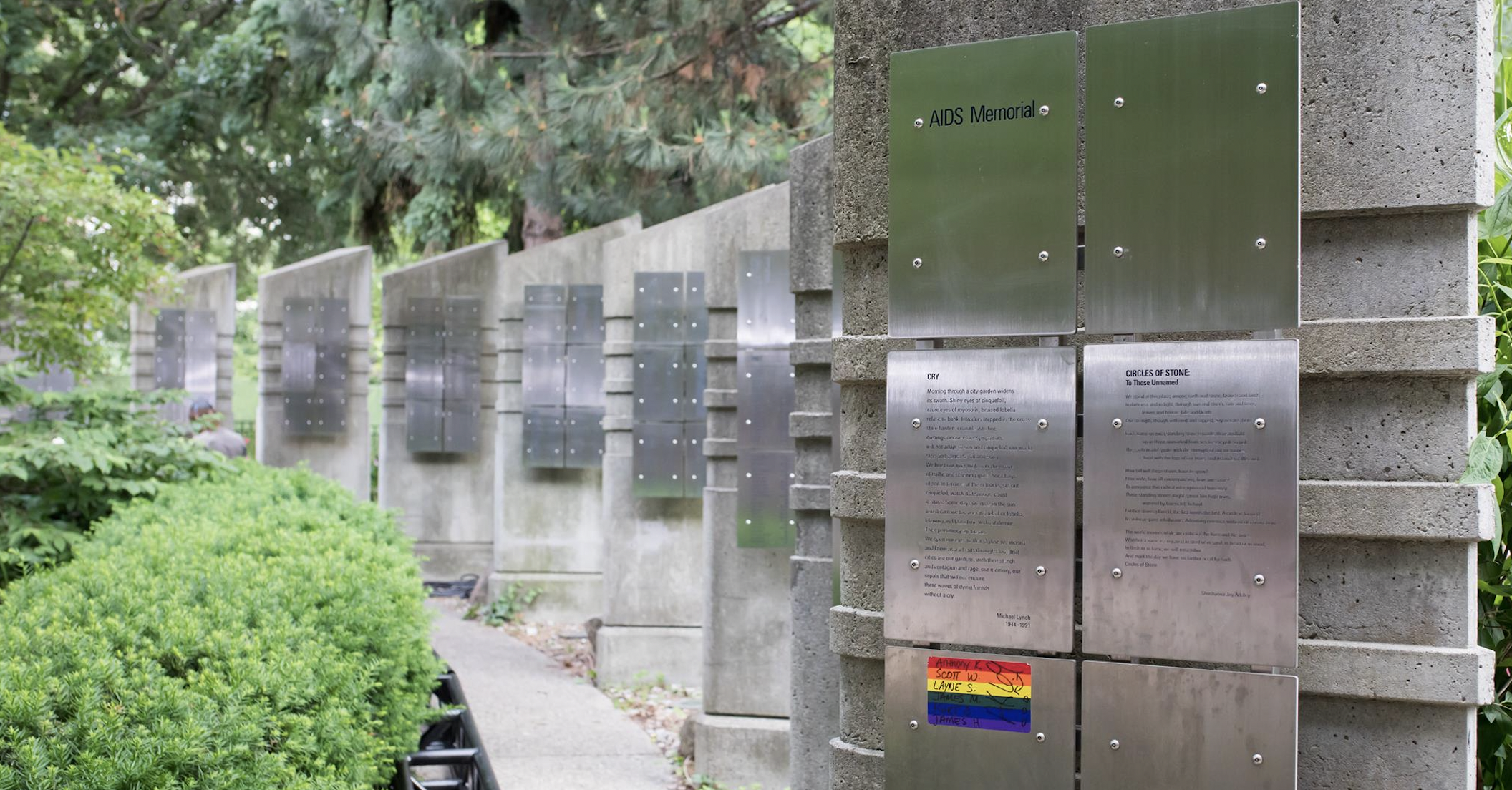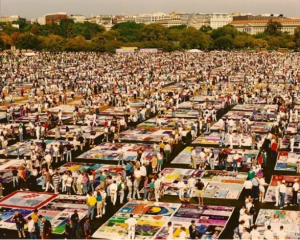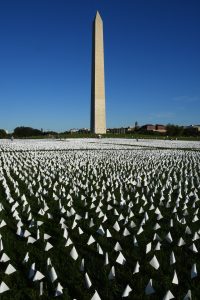9.6 Pandemic Memorials, Commemoration, & Remembrance
HIV/AIDS


The NAMES Project AIDS Memorial Quilt, an enormous, travelling, grassroots, living memorial, “is a monumental testament to lives lost to AIDS” (Lewis & Fraser, 1996, p. 434). The Quilt was conceived of in 1985 and has steadily grown since then. It is so large now that it cannot be displayed in its entirety, as occurred regularly in the late 1980s through the 1990s (see photo to right). Currently, over 110,000 people who have died from AIDS-related illnesses are represented on the 50,000 individual three-by-six-foot panels that make up the Quilt (National AIDS Memorial, n.d.). The Quilt continues to grow as panels are made and contributed by families and friends. Through the signature squares at Quilt displays, viewers are offered an opportunity to express themselves and/or record their experiences of the Quilt (Lewis & Fraser, 1996). This grassroots memorial serves to educate and promote awareness about HIV/AIDS and the HIV/AIDS pandemic (Balsamo & Ferreira, 2020). It also serves as a political tool and a therapeutic outlet. Its existence, growth and annual displays are a means by which to illustrate the magnitude of the loss of life, to counter official narratives and silences, as well as bring attention to the lack of government response to the health crisis (Barajas, 2021; Lewis & Fraser, 1996). Due to the Quilts size, and the fact that each individual panel is the size of a grave, the Quilt is also a powerful symbol to commemorate the dead. Quilt exhibits provide a space for people to gather and grieve together, while also promoting social action and awareness of the pandemic (Lewis & Fraser, 1996).
Click the link below and scroll down to view the individual stories of people represented on the Quilt panels
Forty Years: Forty Powerful Quilt Stories
VIDEO: Video Essay of the AIDS Memorial Quilt: Origins, Legacy, Futures
The following video provides some of the history and significance behind the AIDS Memorial Quilt.
COVID-19 Pandemic

Grassroots memorials have begun appearing throughout the world to honour lives lost during the COVID-19 pandemic (Barajos, 2021). These memorials allow people to remember and mourn their loved ones who have died, whose lives they may not have been able to adequately honour due to COVID-19 public health restrictions. COVID-19 memorials also provide the public with an opportunity to grieve the various losses they have experienced throughout the pandemic (e.g., freedom of movement and association, loss of job, loss of home, loss of social life, etc.) (Barajos, 2021) (See Chapter on Plagues & Pandemics). Since the COVID-19 pandemic is ongoing, many of these memorials and commemorations take the form of living memorials. We see memorial flags, hearts, and ribbons as symbols for the pandemic around the world (Barry, October 2021). One large scale COVID-19 memorial, representing the more than 740,000 Americans who had died as of October 2021 (Nearly 1 million US deaths as of April 2022), covered the National Mall in Washington DC (See photo above) (Barry, October 2021). In London UK, the National COVID Memorial Wall is a living memorial, providing space for bereaved individuals to paint red and pink hearts in remembrance of their loved ones (The National COVID Memorial Wall, n.d.).
Click the links below to learn more about COVID-19 and memorials:

